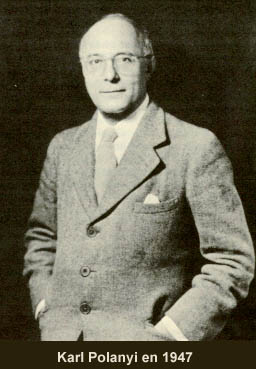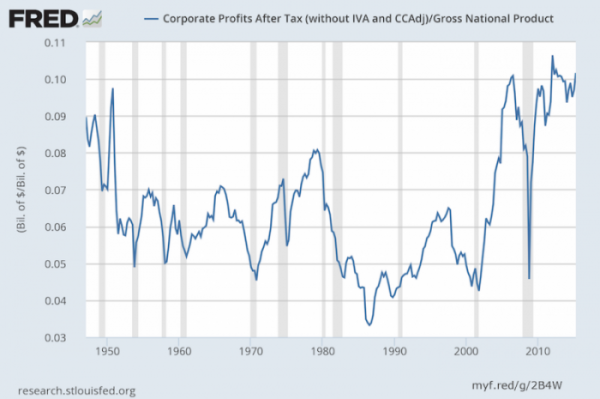The Origins of Totalitarianism Part 1: Introduction
The Origins of Totalitarianism is Hannah Arendt’s analysis of the rise of totalitarian governments, the Nazis under Hitler in Germany and the Communists under Stalin in Russia. It was published in 1951, though it was largely completed in 1945. In its original form it focused primarily on Nazism, and as more detail emerged about Stalinist Russia, the book was revised. There are three sections, Antisemitism, Imperialism and Totalitarianism. The book can be read here. Page numbers at this link correspond to the page cites I’ll be using.
Rationale
Why this book? Anyone following current US politics has seen references to a fascist turn in Republican politics, and in the crowds surrounding at least one of the candidates. Similar but much smaller outbreaks occurred at campaign appearances of Sarah Palin in 2008 and at other Republican and conservative gatherings. One early user of the term fascism was @billmon1 on the Twitter, also here. Arendt’s detailed exploration of the rise of fascism, particularly in Germany, is a tool to help us understand its genesis, and perhaps see certain parallels to today.
In Modernity on Endless Trial, Leszek Kolakowski says:
If we are to believe Hegel – or Collingwood – no age, no civilization, is capable of conceptually identifying itself. This can only be done after its demise, and even then, as we know too well, such an identification is never certain or universally accepted. Both the general morphology of civilizations and the descriptions of their constitutive characteristics are notoriously controversial and heavily loaded with ideological biases, whether they express a need for self-assertion by comparison with the past or a malaise in one’s own cultural environment and the resulting nostalgia for the good times of old. Collingwood suggests that each historical period has a number of basic (“absolute”) presuppositions which it is unable clearly to articulate and which provide a latent inspiration for its explicit values and beliefs, its typical reactions and aspirations. If so, we might try to uncover those presuppositions in the lives of our ancient or medieval ancestors and perhaps build on this basis a ” history of mentalities” (as opposed to the “history of ideas”); but we are in principle prevented from revealing them in our own age, unless, of course, … we are living in the twilight, at the very end of an epoch. P. 3.
Maybe so, but I think most ages are blessed with a few people capable of identifying at least the central points of a civilization, as they write the first drafts of history from the perspective of those who lived through it. They give us signposts for thinking about the best way to proceed into the future, and ways of understanding aspects of we humans and our societies that seem ineradicable. I’m also dubious about the term “historical period”, because there are few ideas that ever really disappear once installed in human minds. Instead they hide in the corners of society until conditions are ripe for another outbreak.
Arendt and Polanyi both wrote near the end of WWII. Both were Jews, educated in Europe after WWI, and both left Europe as Antisemitism struck at their ability to work and to live. Arendt left Germany in 1933, first to Czechoslovakia and then Geneva, then Paris. She was picked up by the Vichy regime in France, and interned in a camp. She was permitted to leave France in 1941 and moved to the US using an illegal visa issued by a US diplomat, Hiram Bingham, and with the aid of a noted rescue worker, Varian Fry. Polanyi left Vienna in 1933, and moved first to London, and then to the US. After WWII, he was unable to obtain a visa because his wife was a former Communist, so they moved to Canada and Polanyi commuted to New York where he taught at Columbia.
The technique adopted by Karl Polanyi in The Great Transformation was to look far back into history to show the wave that swept over European nations with the Industrial Revolution and the rise of capitalism as the dominant form of economic organization. Foucault uses the same technique, for example in Discipline and Punish, which describes the impact of the Industrial Revolution on the working people of France. Arendt uses the same technique. She gives a broad historical perspective to the rise of fascism and communism and their transformation of Germany and Russia into totalitarian states. This technique offers a way to begin to identify a civilization, or a social structure, to get at its roots. Thus, all three follow Kolakowski’s model.
In this post, I described Polanyi’s discussion of the rise of fascism in Germany. It is similar to Arendt’s analysis in The Origins of Totalitarianism. They both see the destruction of social roles of huge numbers of people, primarily from the lower and middle classes, as a crucial element of that change, though they use different sources and different language. Polanyi points to the large numbers of people who lost status and social position and roles in the sweeping changes of the Industrial Revolution, and in the wake of the Great Depression. As we will see, Arendt points to the dislocation of millions as the Industrial Revolution progressed, and to the dislocation of the lives of many Germans in the wake of defeat in WWI, exacerbated by hyperinflation in the early 20s and then worsened by the Great Depression.
It seems to me that the wave of neoliberalism that rose to new heights under the Reagan and Thatcher administrations and has wedged itself in our minds since, is a cultural change, not of the magnitude of the rise of totalitarian states or the Industrial Revolution, but still with an enormous impact on the lives of individuals. For many in the upper class, the neoliberal turn has removed any sense of responsibility to society or to the planet. For others in the upper class, there is increasing fear for the future because of global warming and the rise of oligarchy.
In the case of the lower and middle classes, that impact has been much more concrete. After years of stagnating wages and pointless wars followed by a frightening financial crash, and more wars and political deadlock, the middle class is disappearing. People experience dropping from the middle class as a loss of status, of a place in society, a role, and even a purpose. There is nothing in US society to replace that status, or to provide a new sense of belonging. These dislocated people are not in any way organized. The neoliberal system dismisses them as moochers and leeches seeking handouts while taking no responsibility for themselves. People who are nominally still middle class are feeling similar pain as their future prospects and those of their children dwindle.
The parallels to today are uncertain. But I think it’s worth examining this argument in detail to see if we can learn something useful.
General Plan
The Origins of Totalitarianism is divided into three sections: Antisemitism, Imperialism, and Totalitarianism. I intend to focus on Totalitarianism. I see the first two sections as setting up the third. One of the central ideas in the section on Antisemitism is that the Jews in Europe were never assimilated. There are several forces described in the section on Imperialism that reach full flower in Totalitarianism. Among others, these include the idea of superfluous humans and superfluous capital, which are associated with Arendt’s categories of the mob and the masses, and the whirlwind of capitalism. I’ll take those up briefly, and quite incompletely, before turning to the main discussion.



